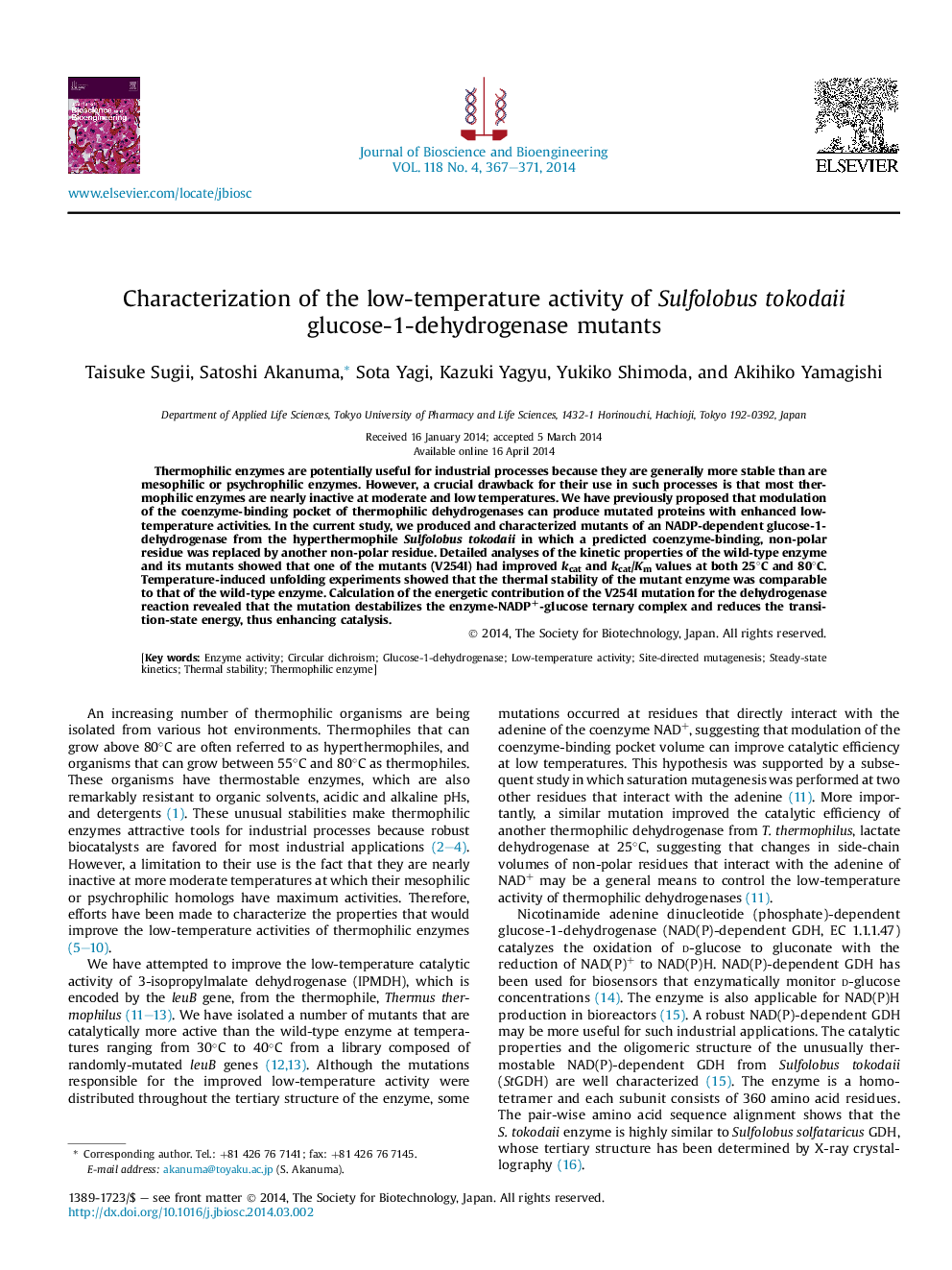| Article ID | Journal | Published Year | Pages | File Type |
|---|---|---|---|---|
| 20280 | Journal of Bioscience and Bioengineering | 2014 | 5 Pages |
Thermophilic enzymes are potentially useful for industrial processes because they are generally more stable than are mesophilic or psychrophilic enzymes. However, a crucial drawback for their use in such processes is that most thermophilic enzymes are nearly inactive at moderate and low temperatures. We have previously proposed that modulation of the coenzyme-binding pocket of thermophilic dehydrogenases can produce mutated proteins with enhanced low-temperature activities. In the current study, we produced and characterized mutants of an NADP-dependent glucose-1-dehydrogenase from the hyperthermophile Sulfolobus tokodaii in which a predicted coenzyme-binding, non-polar residue was replaced by another non-polar residue. Detailed analyses of the kinetic properties of the wild-type enzyme and its mutants showed that one of the mutants (V254I) had improved kcat and kcat/Km values at both 25°C and 80°C. Temperature-induced unfolding experiments showed that the thermal stability of the mutant enzyme was comparable to that of the wild-type enzyme. Calculation of the energetic contribution of the V254I mutation for the dehydrogenase reaction revealed that the mutation destabilizes the enzyme-NADP+-glucose ternary complex and reduces the transition-state energy, thus enhancing catalysis.
